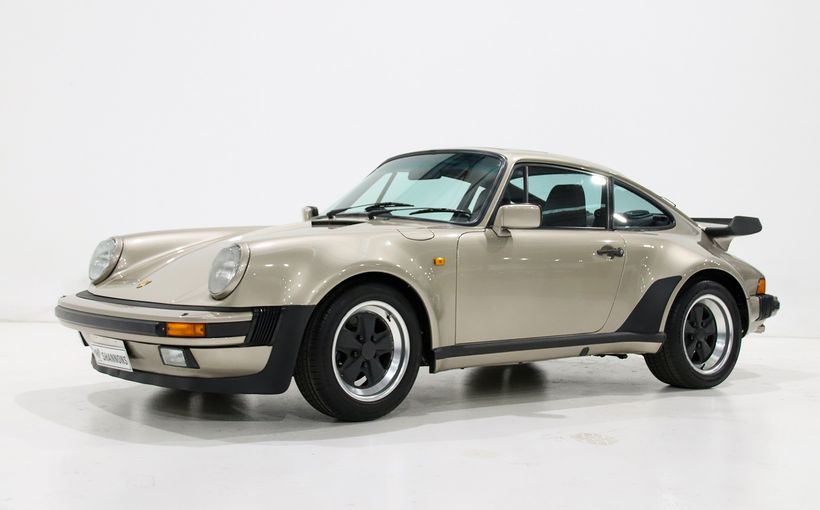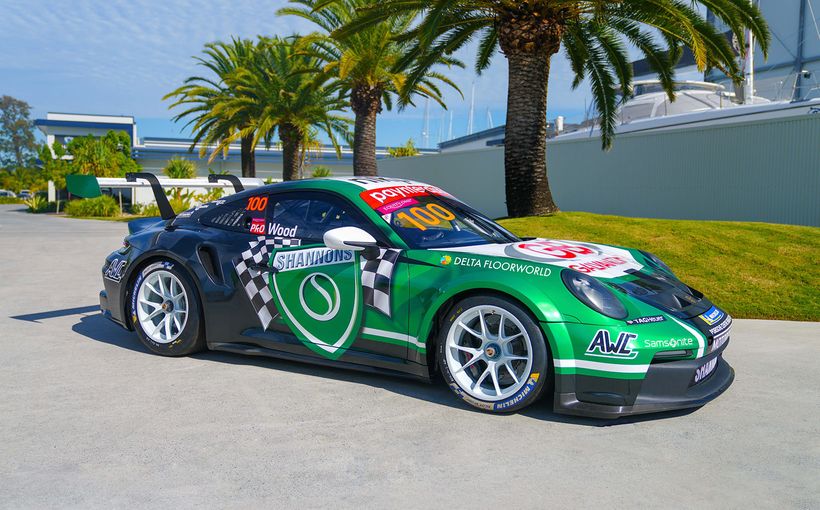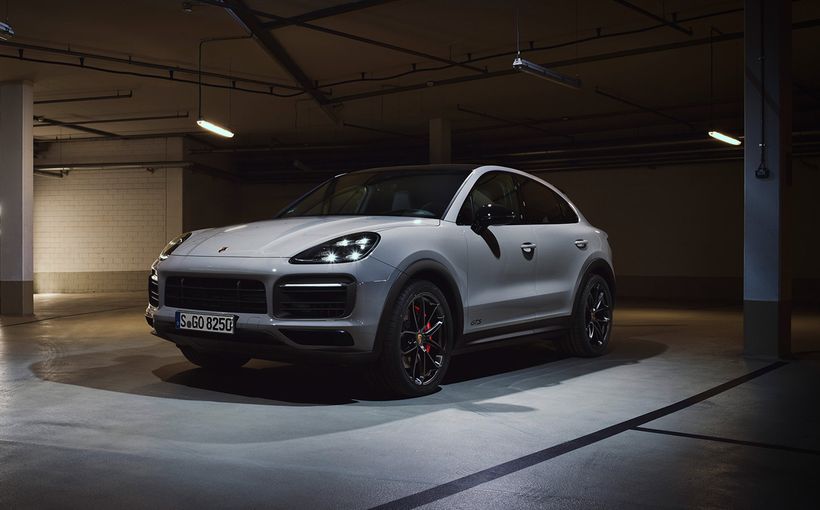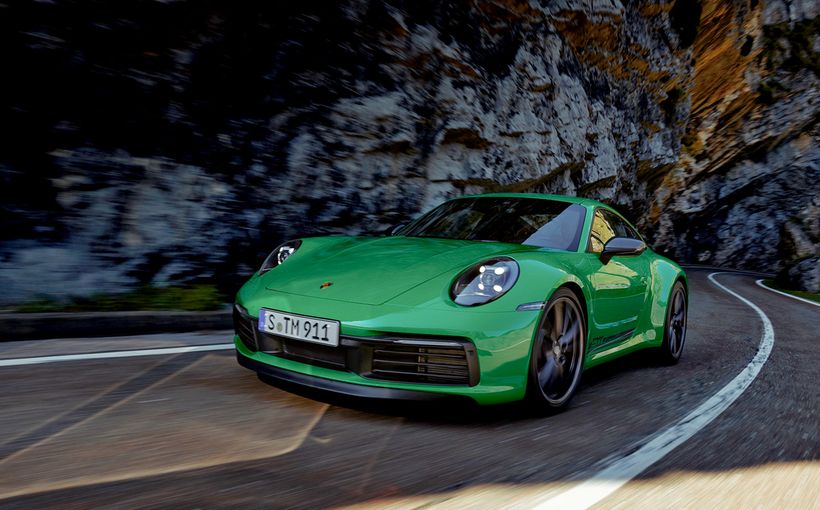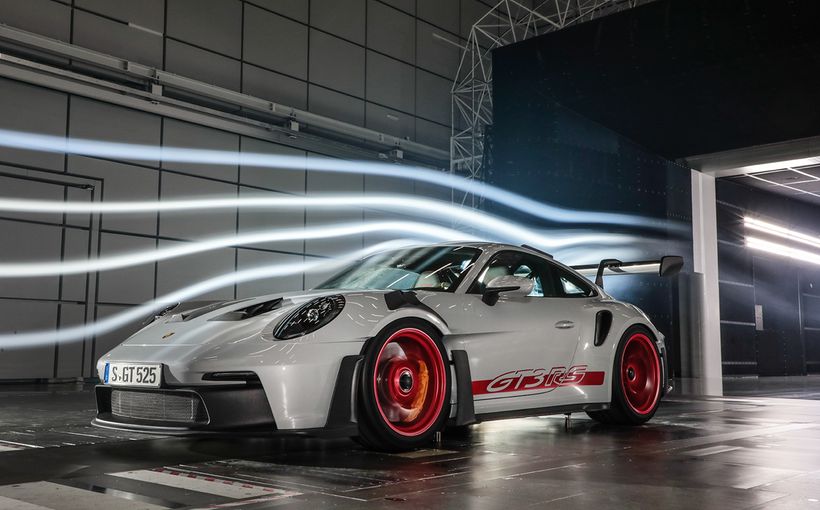Arthur and Con Kimides’ 1979 Super Car: Time-Warp Porsche 930

Con Kimonides and Peter Kapoglis are the joint owners of this spectacular Australian-delivered right-hand-drive 1979 Porsche 930. Con's son Arthur oversees the full tender loving care process and is rewarded with use of the car. These three custodians have enjoyed their magniloquent 930 for about five years now after acquiring it from a deceased estate. It is believed to have sat in a warehouse for about 12 years and when they got their time-warp Porsche all the window rubbers were perished and it was still shod with the original Yokohama tyres. Arthur, who is in charge of delivering appropriate doses of Tender Loving Care, has completely replaced all the rubbers.
Apart from that the car is almost astonishingly original. They still have those Yokohamas mounted on the Fuchs alloys (16 X 7 front, 16 X 9 rear) which is kind of cool but they swap them out for another set of wheels when the car is driven, which is quite regularly.
Father and son live in Melbourne. Rather than cars and coffee, where the cars just sit in one spot receiving admiration, they prefer to drive on some of the favourite routes in the state which include the Black Spur and down to Portsea. ‘I try to drive it at least once a month,’ says Arthur.

Image: @insightphotomedia
They chose the Martini racing livery after studying the original factory options and believe the result is the best possible combination from any angle. The light blue metallic paintwork remains original but all the logos and stripes are wraps.
This 930 was delivered new in 1979 by Chateau Moteur in Adelaide. Can you imagine how you would have felt spotting one of these in the traffic back in the day when the VB Commodore and XD Falcon were the top-selling cars?

Image: @insightphotomedia
‘You don’t mess around modifying a special car like this one,’ says Arthur proudly. What does he love most about it? ‘The turbo body definitely and the whale tail. When the 930 hit the roads in 1975 – having made its public debut at the 1974 Paris Salon – the look was nothing short of fantastic – simply, nothing else looked anything like the 911 Turbo.
Here was the unique, elegant Porsche 911 taken to the visual and mechanical max; indeed, the extroverted 930 presented a marked contrast to the lean, elegant, almost dainty-looking 1963 original! Beneath that massive whale tail sat the famous all-alloy horizontally-opposed 3.0-litre six-cylinder engine with Bosch fuel injection and a KKK turbocharger, making the 930 the fastest production car in the world. Officially the variant was known as the Type 930 Porsche 911 Turbo – it’s OK to call it either a 930 or a 911 Turbo but never a 930 Turbo!

The whale tail incorporated two intake channels, one for the engine fan and the other for the air-conditioning. Bigger brakes and uprated suspension were fitted.
Maximum power was a then phenomenal 193kW, backed by 350Nm of torque. Although Porsche equipped lesser 911s with a five-speed manual gearbox, that unit was deemed insufficiently strong for the turbocharged engine’s torque and a robust four-speeder was used instead. Remarkably in the context of today’s heavier cars, the 930 weighed just 1335kg and the power to weight ratio was tremendous. Zero to 100kmh/ took just 5.6 seconds, in an era when anything much below 12 was considered pretty fast.

Image: @insightphotomedia
It would be hard to imagine a worse time to launch a brand new ultra-performance car than the mid-1970s. Between 1972 and 1975 oil prices almost quadrupled and would triple again before 1980. Internationally, legislators were doing their best to render high-performance cars and gas guzzlers a part of history.

Image: @insightphotomedia
In Australia, the combination of pricey fuel and anti-pollution legislation – along with a tabloid newspaper story on ‘160 MPH’ super cars – brought the first, golden era of homegrown super cars to an end, with the awesome Falcon GT going out of production with the XB series.
Doubtless, back in Zuffenhausen the Porsche product planners were intensely aware of how unfashionable performance cars had become, but they weren’t phased. Porsche had built its reputation on racing and it was with the track in mind that the decision was made to turbocharge the 911. The 911 Turbo was conceived as a homologation special for the proposed ‘Silhouette Racing’ formula. This was to be a road-going race car in the fashion of the 1973 Carrera 2.7 RS. The business plan – dating from 1972 – called for the sale of 400 examples in 24 months in order to qualify the Type 930 for this category. But the reality was that seven times that number had been sold by 1977!

Image: @insightphotomedia
Without such sales success, it is probable that the 911 Turbo would not have become a regular production model – at least until the following decade (by which time Saab had successfully pioneered mass-production of turbocharged cars). But the sale of 2800-plus of the flagship 930 in just three years saw the decision taken to make the 911 Turbo a regular model. At the time, among European manufacturers, only BMW with its 2002 Turbo had chosen this path to higher performance – Saab would follow later in the 1970s.

Image: @insightphotomedia
For model year 1978, major changes were made to the Type 930. A larger 3.3-litre engine made 221kW of power and 412Nm or torque. The increase in capacity did not result merely from a bigger bore as the stroke, too, was enlarged. Bigger bearings were fitted. The new engine was also equipped with an intercooler which necessitated a restyling of the whale tail. Top speed was now a genuine 240km/h with zero to 100 in 5.4 seconds.

Image: @insightphotomedia
Upgraded brakes were inspired by the 917 Le Mans racers and the front discs got four-piston calipers and were cross-drilled (perhaps for the first time ever on a production car!)
To extract maximum performance from one of these cars requires deft hands and feet, plus a fair helping of courage. Both the 3.0-litre and 3.3-litre 930 suffer from serious turbo lag, with boost not coming in to a marked degree until the tachometer needle is approaching 4000rpm. With such marked rear-end weight bias and peaky power delivery, the 930 does demand a high level of competence from any racer or would-be racer.

Image: @insightphotomedia
Peter, Con and Arthur treasure their gorgeous 930 and wisely intend to preserve it in original condition. While it is not their only collector car (they also have a 1969 Mustang Mach One and a 1998 BMW E36 328i convertible), the Porsche is their undoubted favourite.
View Arthur and Con Kimides’ Shannons Club Garage and Connect with AK930T


